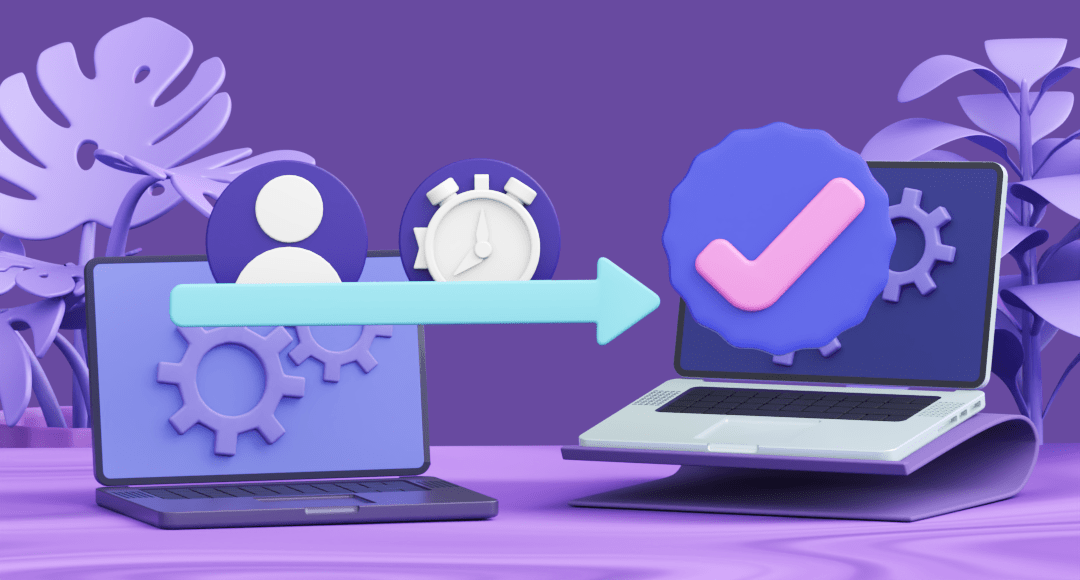What Are Project Controls?
If you are a project manager, time and money are not just two abstract nouns for you. These are the concepts that often determine whether your project will end up a success or a failure.
Therefore, project managers are always careful regarding the utilization of these two resources.
In order to prevent the risk of running out of time and money, project managers use various skills and techniques within the range of project controls.
This guide will help you understand the basics of project controls. Keep on reading and learn:
- The definition of project controls,
- Why project controls are important,
- The variables and tools of project controls,
- The benefits and challenges of project controls,
- What software is used for project controls, and many other things.
So, let’s get started!

Table of Contents
How do we define project controls?
The definition of project controls is somewhat elusive, but most respectable sources agree on the definition provided by Patrick Weaver, PMP, PMI-SP, FAICD, FCIOB of Mosaic Project Services Pty Ltd.
He described project controls in his White Paper as “the data gathering, management and analytical processes used to predict, understand and constructively influence the time and cost outcomes of a project or program; through the communication of information in formats that assist effective management and decision making.”
His definition is based on the feedback gained from many peers and fellow experts in the “controls community”.
Therefore, we can conclude that project controls help projects stay within budget and stick to their schedule by offering them the right information.
We can also deduce that project control processes assist project managers in decision making. Their goal is to minimize the variation between the project plan and its execution in terms of time and money.
The sad truth is that something will always interfere with the project plan.
Changes during the project life cycle are inevitable, and they happen on a regular basis. These changes can easily cause issues that threaten the success of the entire project.
And this is where project control activities come to the rescue.
They help project managers anticipate possible project risks before they occur and help prevent them.
Why are project controls important?
Unfortunately, many companies don’t consider project controls a necessary part of their project management. Yet, when their projects face obstacles, they start to perceive the significance of these processes.
This is especially true of large-scale projects where there is a much greater chance for things to go wrong.
According to research, a staggering 98% of large-scale projects face cost overruns and schedule delays.
What is also fascinating is that they suffer the cost increase that often amounts to 80% of the original value. In addition, the delay they experience is sometimes 20 months or even more.
Although these megaprojects are hard to predict due to constant changes, there is still a way to avoid or mitigate any negative effects.
These projects demand an effective cost and schedule control methodology. A strong project control system could help project managers make timely decisions and facilitate the achievement of project objectives.
Many surveys have shown that companies that use project controls are less likely to experience project failure.
One such survey from 2017 revealed that organizations that used project controls had a success rate of 68%. On the other hand, the companies that refrained from using them had a success rate of only 6%.
So, it’s easy to conclude that using project controls increases the chances of project success. Although unexpected changes are inevitable, they can be anticipated and their negative impact reduced.
The power of project controls is in their approach based on data collection and analysis.
When a problem appears — such as a schedule delay — a project manager wants to know how it originated and how it can be solved. Project controls provide these answers and thus help the project manager make the right decisions.
Project controller vs. project manager
The functions of a project controller and a project manager overlap. Some companies assign the role of a project controller to some of their project managers, further adding to the confusion.
Still, it’s crucial to understand the difference between these two roles so that we can recognize the value of project controls.
The main objective of project controllers is to minimize the variance in cost and schedule from the original plan. They perform analyses and give recommendations based on the data they collect.
However, they are not responsible for putting these recommendations into practice. This is the job of a project manager.
A project manager receives advice from a project controller about possible threats to the project and takes appropriate preventive measures.
With this in mind, we can say that project controllers act as the right hand of project managers. They help project managers make informed decisions to keep the project on the right track
When to implement project controls
To produce the desired effect, project controls should be present in all phases of the project life cycle.
Let’s take a look at how project controls are implemented in each phase of project development.
Project controls implementation: Project initiation
During the initiation phase, the project manager, among other things, needs to determine the project timeline and cost.
Project controls are incredibly helpful for reaching these decisions.
Money and time can cause a lot of trouble for project managers. Therefore, when estimating these resources, they should stick to the advice given by project controllers.
Accurate estimates will help prevent risks that could affect the entire project.
Project controls implementation: Project execution
Using project controls in the execution phase will provide information about the status of the project, as compared to the plan.
Project controllers monitor the project’s progress, trying to identify any emerging problems. They compare the actual progress to the project plan to determine if any corrections should be made.
Project controls implementation: Project closure
When the project deliverables are produced, project controllers still have a lot to do.
They analyze the work done and come to a conclusion that can be used for future projects.
Thus, the data project controllers gather in this phase serves as guidelines for future projects. It helps project managers learn from experience, no matter if it’s good or bad.
Stages of project control
To perform their function, the project control processes need to go through several stages. Each of them is characterized by a particular action.
These stages are as follows:
- Creation of the project baseline that will serve for measuring progress and performance,
- Comparison of actual progress with the baseline,
- Analysis of the data collected through comparison,
- Identification of baseline variances and determination of their causes,
- Correction of deviations to stay on schedule and within budget.
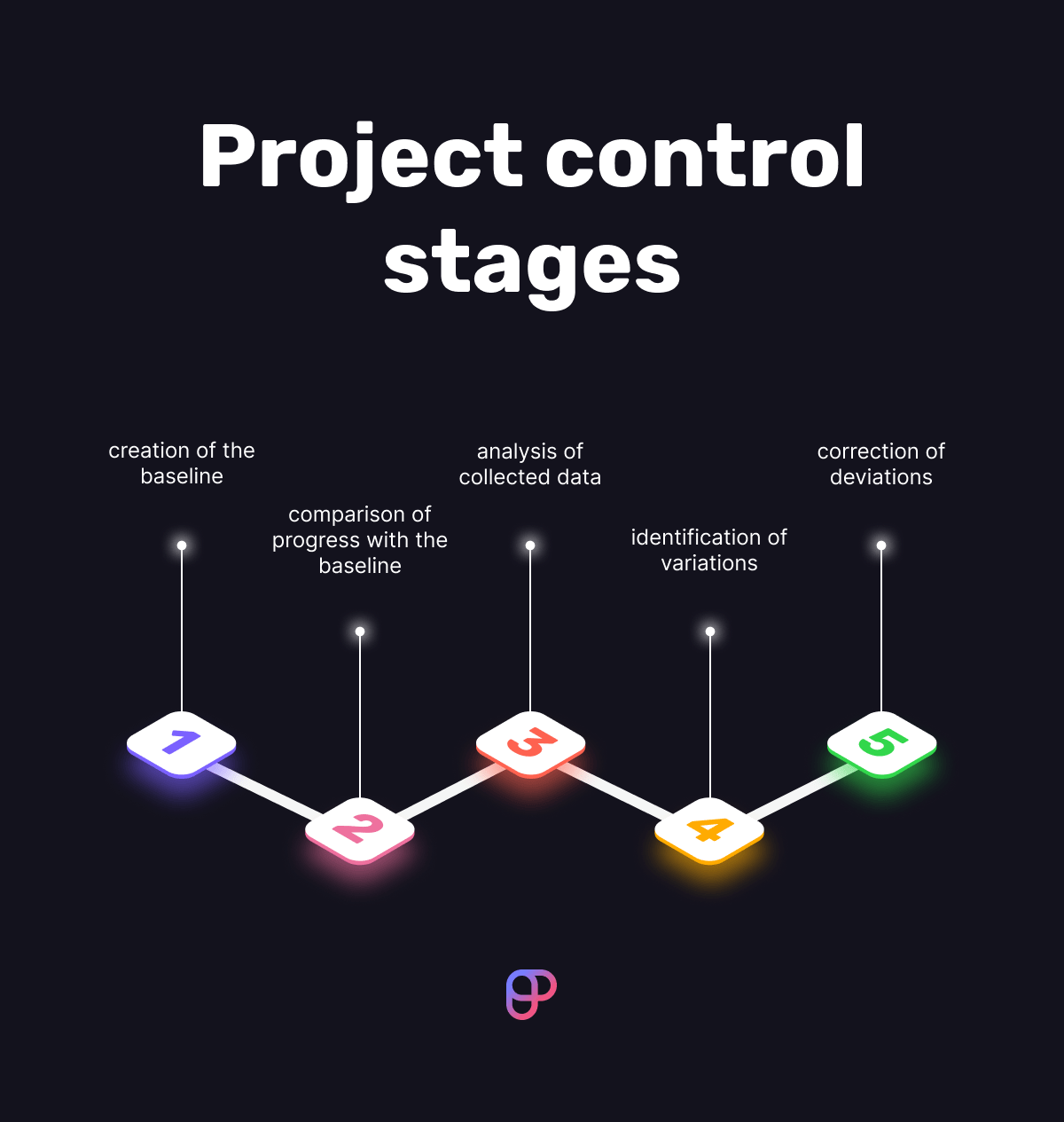
5 Main project control variables
Some project variables can influence project time and cost. Therefore, project control processes focus on measuring and tracking these variables to prevent potential risks.
Project variable #1: Scheduling
Project control starts with project planning and scheduling.
A project schedule functions as the baseline that a project controller will use for comparison. It offers insight into all project activities, deadlines, and milestones.
A good solution for tracking an entire project is the use of project management software.
For instance, Plaky is free to use and offers a variety of options that project controllers will find useful for monitoring the progress of the project.
Apart from being available as a web app, you can also download Plaky for iOS and Android. This way, controlling a project is easy anywhere and anytime.
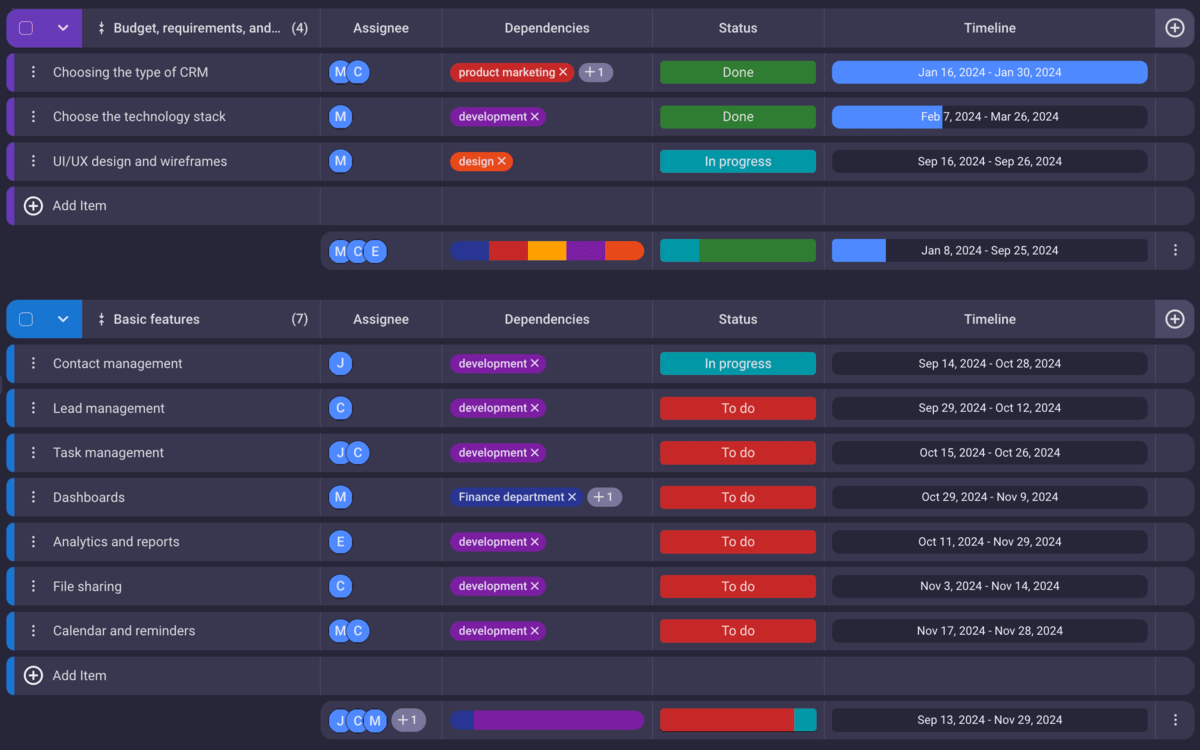
Project variable #2: Cost
Creating a cost management plan is essential for project controls to help calculate the costs accurately.
Estimating costs helps project controllers monitor, manage, and report on any variances that occur.
To determine the cost variance, you should compare the actual cost (the money already spent) with the earned value (monetary value of tasks completed).
By subtracting the actual cost (AC) from the earned value (EV), you will get the cost variance (CV).
Use the following formula for determining the cost variance:
CV = EV – AC
Project variable #3: Risk
Monitoring risk is an important project control process.
Performing risk analysis helps identify potential risks and create a plan on how to address them. This is very important because risk can disturb the project schedule and influence the budget.
When monitored, potential risks can be proactively prevented. Monitoring helps prevent not only the current risks but also those that may appear in the future.
Project variable #4: Change
Changes are not uncommon during project development.
They are the result of various factors and can lead to serious issues such as scope creep.
That’s why it is important to implement a change control process.
Tracking changes can help evaluate them and decide which ones to implement. By doing so, changes will be prevented from affecting the project timeline or scope.
Project variable #5: Performance
By monitoring project performance, project controllers can forecast trends and identify deviations from the original plan.
Based on these findings, they can recommend appropriate corrective measures.
Project performance can be assessed by using key performance indicators (KPIs).
These indicators are parameters that measure a particular value (for instance, the project schedule), by comparing the actual value to that in the project baseline.
5 Project controls tools
We will describe some of the tools used within project control processes to identify potential problems and deviations from the baseline.
We’ll also offer free templates for you to use in your project control.
Tool #1: Project charter
A project charter serves as a brief overview of the entire project. It describes the main elements of a project such as objectives, scope, etc.
Based on the charter, potential investors will understand what the project is about and decide whether they want to finance it.
It shows if a company has enough resources for the project, whether the project is in accordance with the company goals, etc.
Therefore, it is the first project control tool to be used, and it shows if it’s worth starting with a project at all.
💡 Plaky Pro Tip
Read more about the project charter in the article linked below. In it, you will find a project charter template that you can download and use for your projects.
Tool #2: Work Breakdown Structure (WBS)
A Work Breakdown Structure (WBS) is a document that serves as a detailed project outline. It shows how a project is divided into tasks and subtasks throughout all phases of the project life cycle.
This document helps project controllers understand the project’s scope so that they can monitor the project and determine if it’s developing as planned.
They can easily track each task and subtask and identify any changes or potential risks that might appear.
Take a look at our template for a WBS. You can obtain it and adjust it according to your needs.
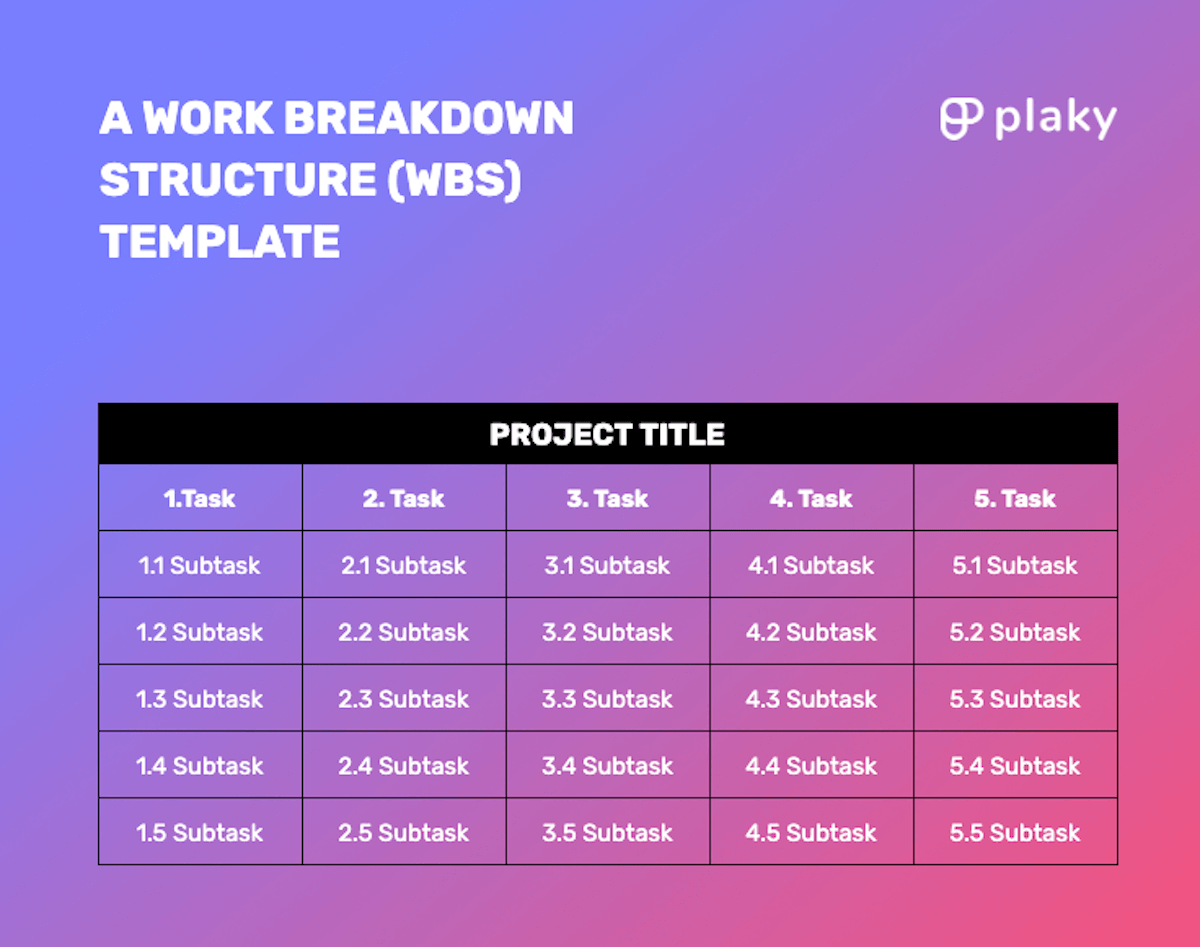
🔽 Get this Work Breakdown Structure (WBS) template
💡 Plaky Pro Tip
Learn more details about a Work breakdown structure and how to create it in the article on the link below.
Tool #3: Risk register
A risk register is a document for logging all identified project risks. Sometimes also called a risk log, the document prioritizes the risks, records the risk owners, the likelihood of the risks happening, their potential impacts, and mitigation strategies.
After the risk has occurred, a project manager may also add the results of the intervention to the risk register — whether the risk was successfully mitigated or not, and if not, why.
Risk register is one of 6 documents that can comprise a RAID log.
💡 PLAKY PRO TIP
To learn more about the RAID log, all the documents it contains, and what it’s used for, head on over to our guide that explains it all:
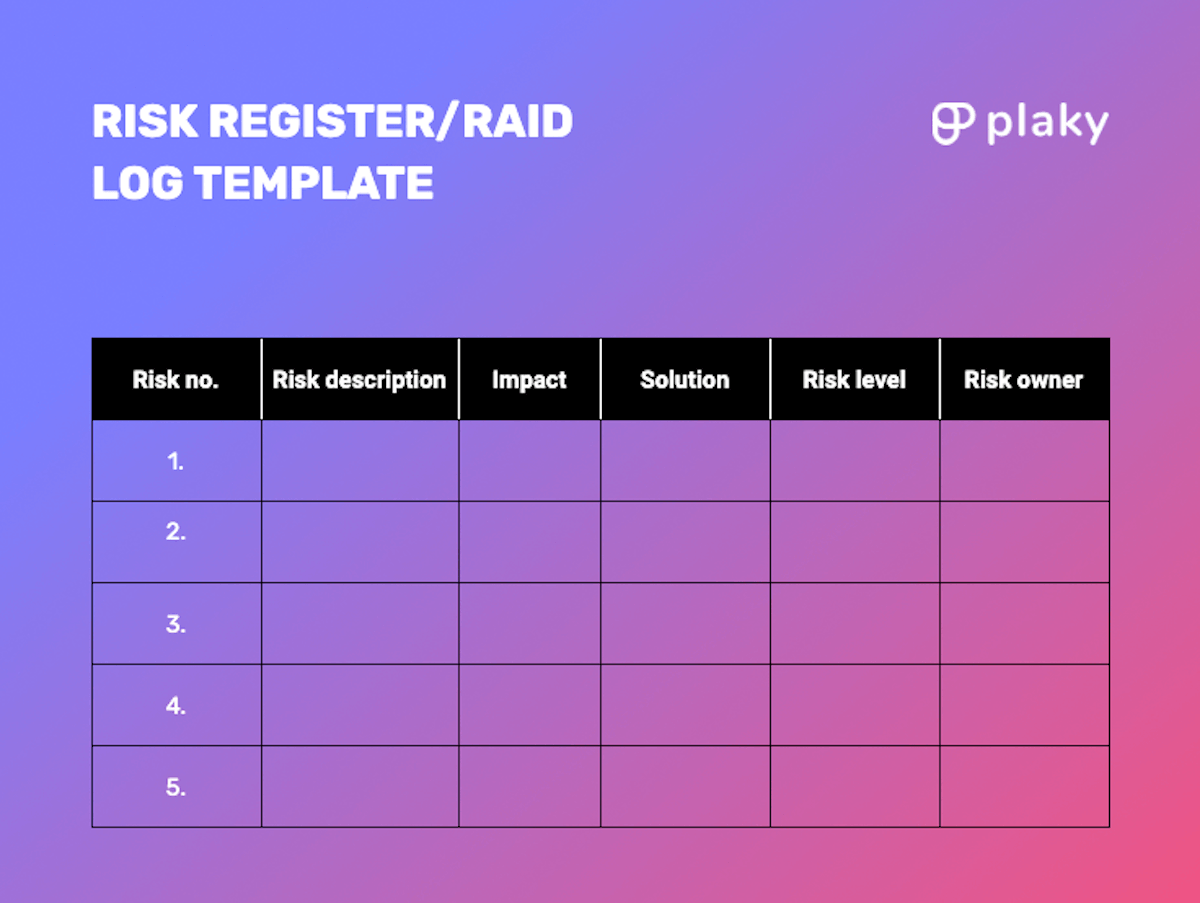
🔽 Get this risk register/RAID log template.
Tool #4: Cost report
A cost report is another important tool used by project controllers. It should provide information about the actual budget used and how it relates to the planned budget.
One of the biggest problems a company can face is a waste of money. Thus, preventing this is one of the most important functions of project control processes.
Cost reports should show if there are any variances between the planned and actual costs.
The aim is to determine why these variances emerged and how to mitigate their negative effects.
Frequent reporting is very important to keep project managers and stakeholders up to date with the money spent. This enables them to take timely corrective measures if needed.
Here is an example of what a basic cost report should look like:
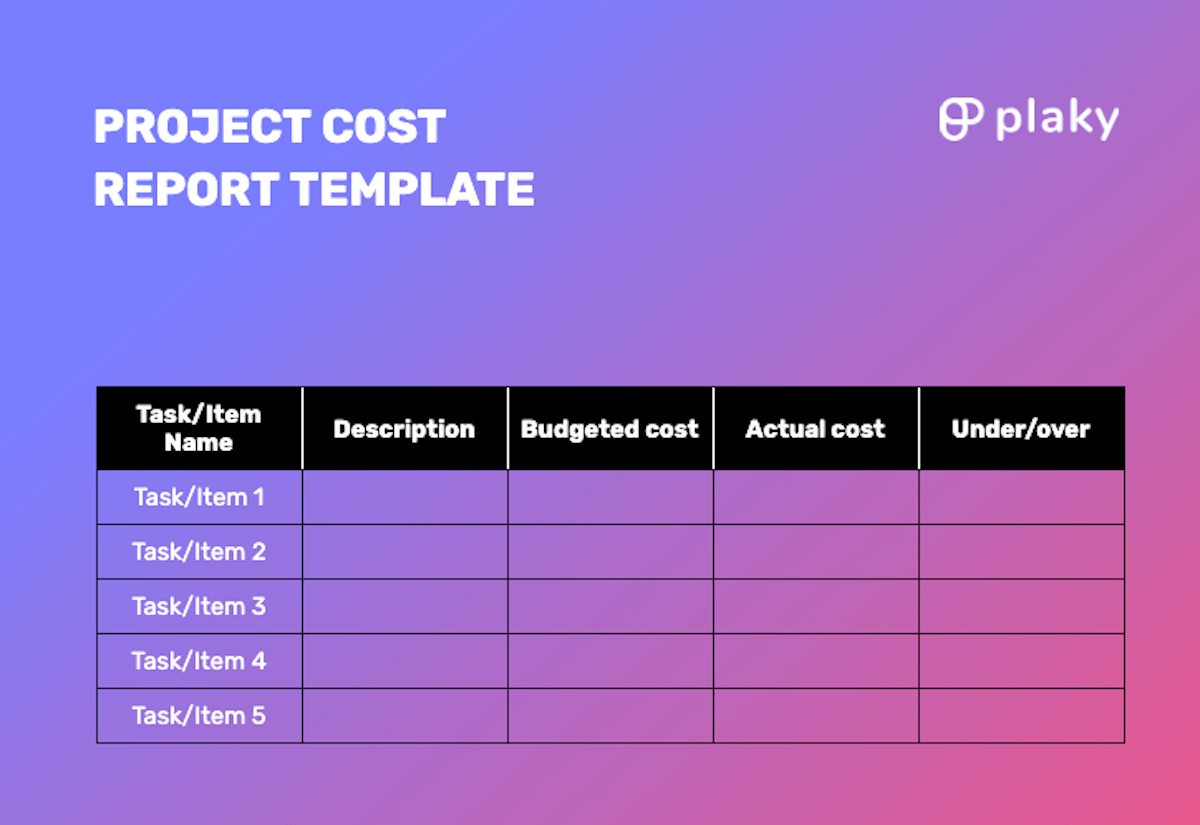
🔽 Get this project cost report template.
Tool #5: Project milestones report
A project milestone is a specific point in the project life cycle, such as the start of a project, the completion of a deliverable, etc.
A project milestone report is yet another document that is used in project control.
It gives information about the progress of a project and shows if deliverables are completed according to the plan.
It helps project managers decide if there is a need to make improvements or introduce some changes.
Here is an example of how the project milestone report should look:
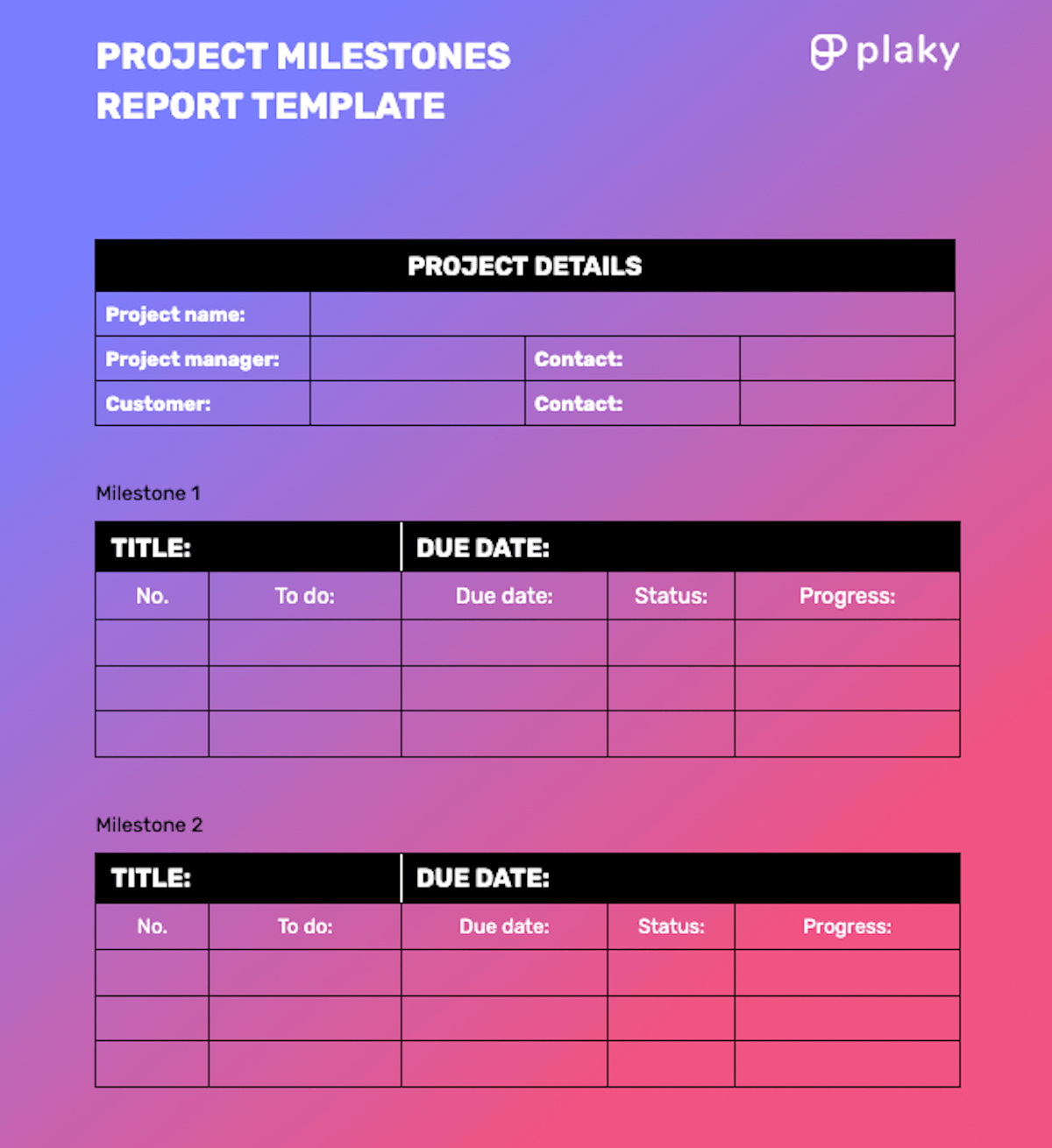
🔽 Get this project milestones report template.
Benefits of project controls
Project control processes bring numerous benefits to a company that decides to implement them.
They promote efficiency within an organization by helping it optimize the use of resources for each project. This way, the company reduces waste and becomes more cost-effective.
Here are some of the benefits that project control brings:
- Cost and time for project completion are easier to predict.
- Chances for scope creep are significantly reduced.
- Gathered data is used as feedback for future projects.
- Advantage over competitors that don’t use project controls is easily gained.
- Project team members are more satisfied with their position and thus more productive.
Challenges of project controls
Despite their usefulness in preventing budget issues and schedule delays, project control processes are not always given the attention they deserve.
When a project fails, some companies blame it on project controllers. Still, sometimes, the only reason why project controls don’t give the desired results is that they are not given enough attention and resources.
Therefore, companies should recognize the advantages of project controls and invest in their development.
In some companies, project control departments are understaffed and lack the necessary tools for work. The result of this is that, instead of using adequate software, they enter data into spreadsheets and similar documents.
All these obstacles prevent project controllers from achieving the best results.
To produce beneficial effects, project controls should be implemented in every phase of the project life cycle.
Conclusion: Project controls prevent delays and help projects stay within budget
Project control processes exist to help constantly monitor and track the time and money spent in every phase of the project life cycle. They compare the actual progress with the project plan and determine potential variations.
Project controllers should always be in touch with project managers and inform them about the variations they encounter. That way, project managers can make informed decisions and prevent the negative effects of unforeseen changes.
Today, project controllers use modern project management software that makes their work easier. It helps them easily collect information and present it to project managers and stakeholders in a transparent way.
Still, in some companies, the significance of project control processes is overlooked and they are not allotted enough resources.
However, to have the full effect and bring improvement, these processes need to be fully recognized.
📖 Project controls can help you stay on top of your projects, but there’s much more to project management you should learn to become a master of your craft. We recommend you check out our Project Management Glossary of Terms.
References
- 2017 Project Controls Survey Report | Logikal | Latest Industry Insights. (2020b, December 15). Logikal. https://logikalprojects.com/insights/2017-project-controls-survey-report/
- Association for Project Management. (2014). Introduction to Project Control.APM.
- Changali, S., Mohammad, A., & Nieuwland, M. van. (2020b, October 20). The construction productivity imperative. McKinsey & Company. https://www.mckinsey.com/capabilities/operations/our-insights/the-construction-productivity-imperative
- CII – Project Controls. (n.d.-b). https://www.construction-institute.org/resources/knowledgebase/knowledge-areas/project-controls
- Project Management Institute. (2017). A Guide to the Project Management Body of Knowledge (PMBOK® Guide)–Sixth Edition (Sixth Edition, Sixth edition).
- The functions of management – mosaicprojects.com.au. (n.d.). Retrieved December 30, 2022, from https://mosaicprojects.com.au/WhitePapers/WP1094_Defining_Management.pdf
 Project Management Hub
Project Management Hub 






